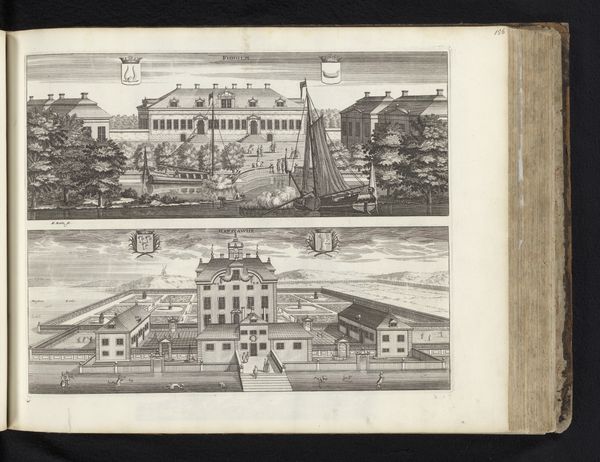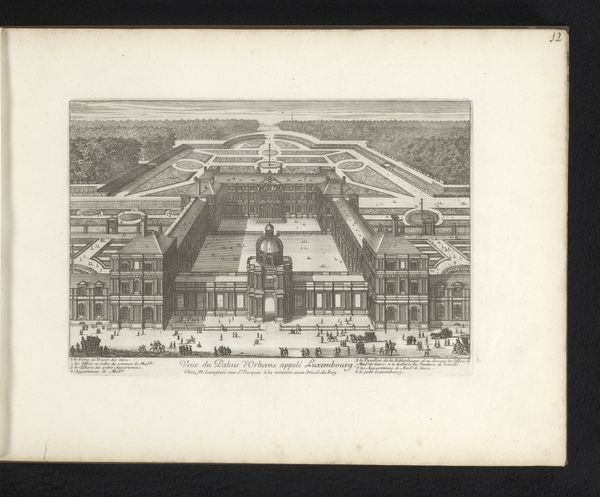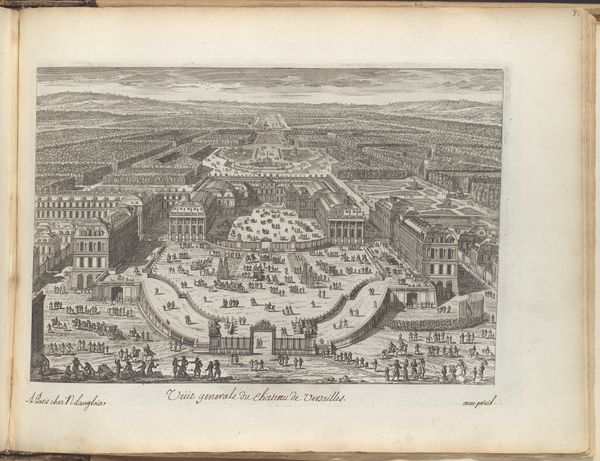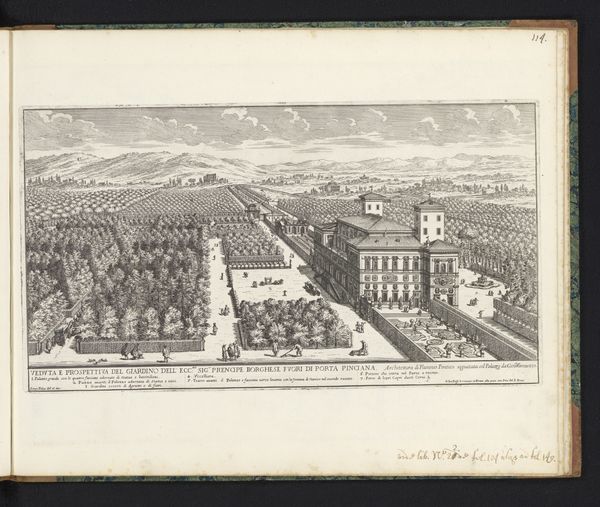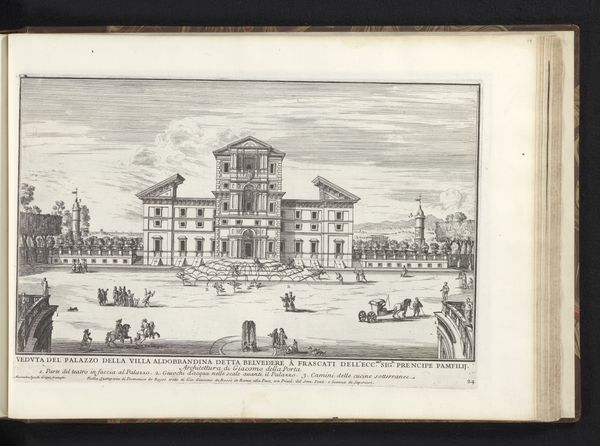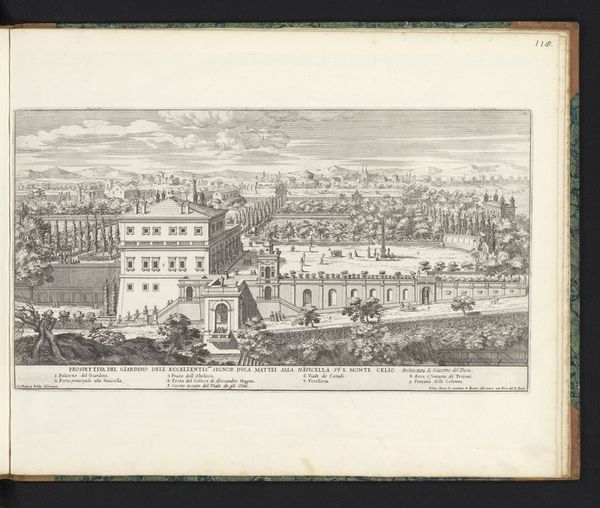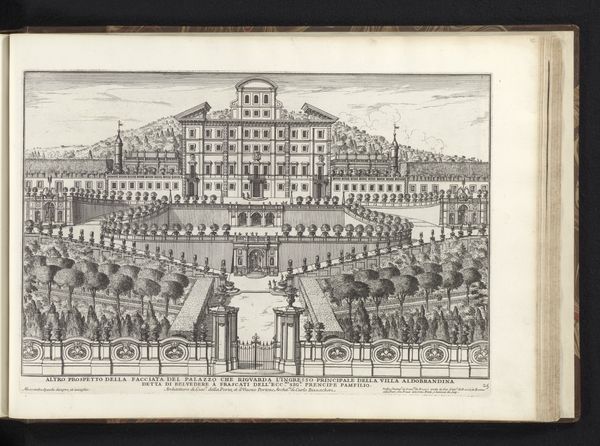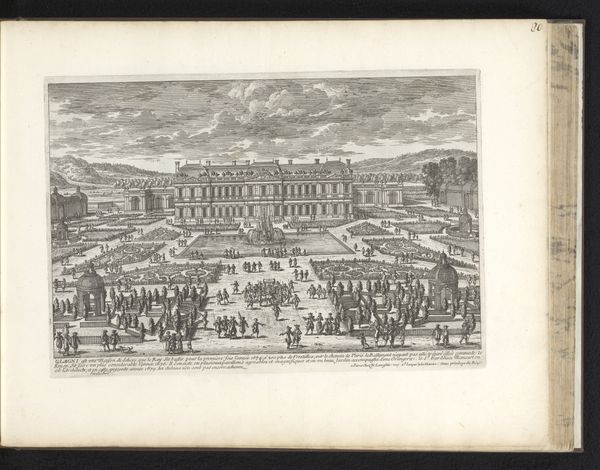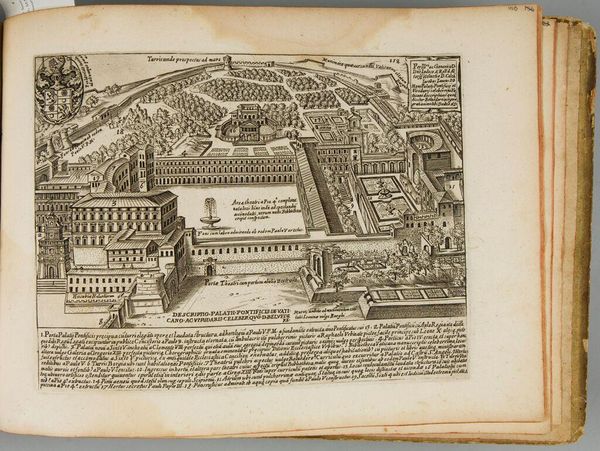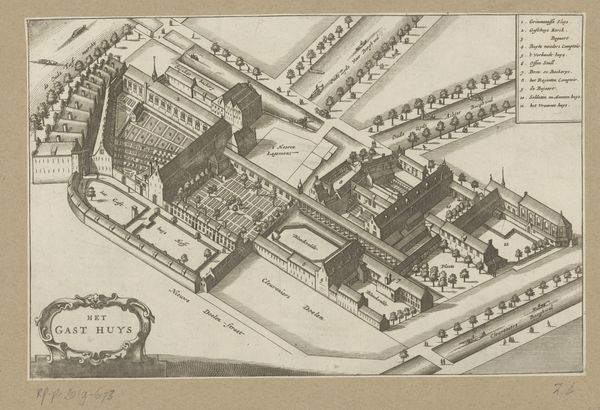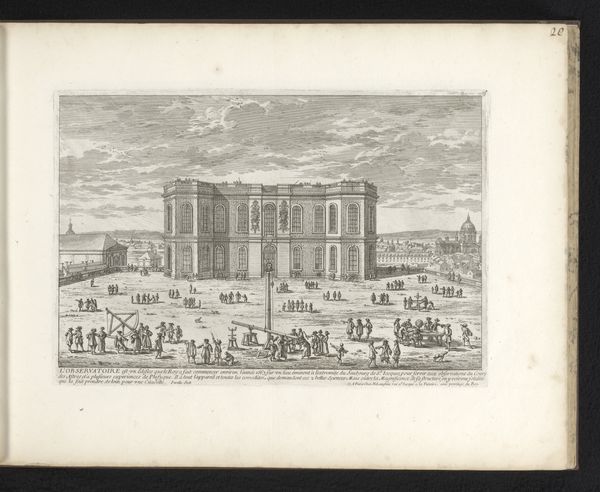
drawing, paper, ink, engraving, architecture
#
drawing
#
baroque
#
pen drawing
#
landscape
#
paper
#
ink
#
cityscape
#
engraving
#
architecture
Dimensions: height 216 mm, width 331 mm
Copyright: Rijks Museum: Open Domain
Curator: The crisp lines of this 1699 engraving, titled "Villa Farnese te Caprarola," by Alessandro Specchi, immediately communicate power. It's a detailed view, showcasing the imposing palace perched on a steep incline. Editor: It has an austere, almost fortress-like feel, doesn’t it? All those geometric shapes and carefully rendered levels climbing up the hillside create a sense of controlled dominion. It’s less welcoming and more about conveying authority, a man-made acropolis rising from nature. Curator: That's a crucial observation. The Farnese family, powerful patrons of the arts and important figures in the church, intended to broadcast their status. Specchi's choice of medium reinforces that. Engravings were widely circulated, making the palace, and thus the Farnese’s influence, accessible across Europe. The architect, Giacomo Barozzi da Vignola, worked with what had been started as a fortress design. Editor: The terraced gardens remind me of ancient ziggurats. I see echoes of older symbols of power where the ruler seeks to literally climb higher than everyone else, approaching the heavens. This organized space seems like a calculated expression of control not just over the land but also over nature itself. Curator: Absolutely, and consider the strategic location. Placed high above the surrounding town, the Villa offered visual command but also represented social distance. We must understand the artwork’s visual rhetoric within the social context of the late Baroque period. Editor: Even in its execution, the rigorous lines suggest that Baroque control you mentioned. Think of how every plant, every carefully placed figure in the print contributes to the message of refined control. What I see here is not just a building, but the embodiment of the Farnese ambition cast in stone and etched in ink. Curator: Looking closely at the layout reveals the meticulous planning behind both the structure and the grounds. The gardens, laid out in a formal grid pattern, emphasize control and order – demonstrating influence on nature. Editor: Seeing all these visual motifs layered atop each other certainly gives context to the cultural image this artwork wanted to project. Curator: Exactly. Now, it inspires thoughts on landscape and influence of noble houses.
Comments
No comments
Be the first to comment and join the conversation on the ultimate creative platform.
